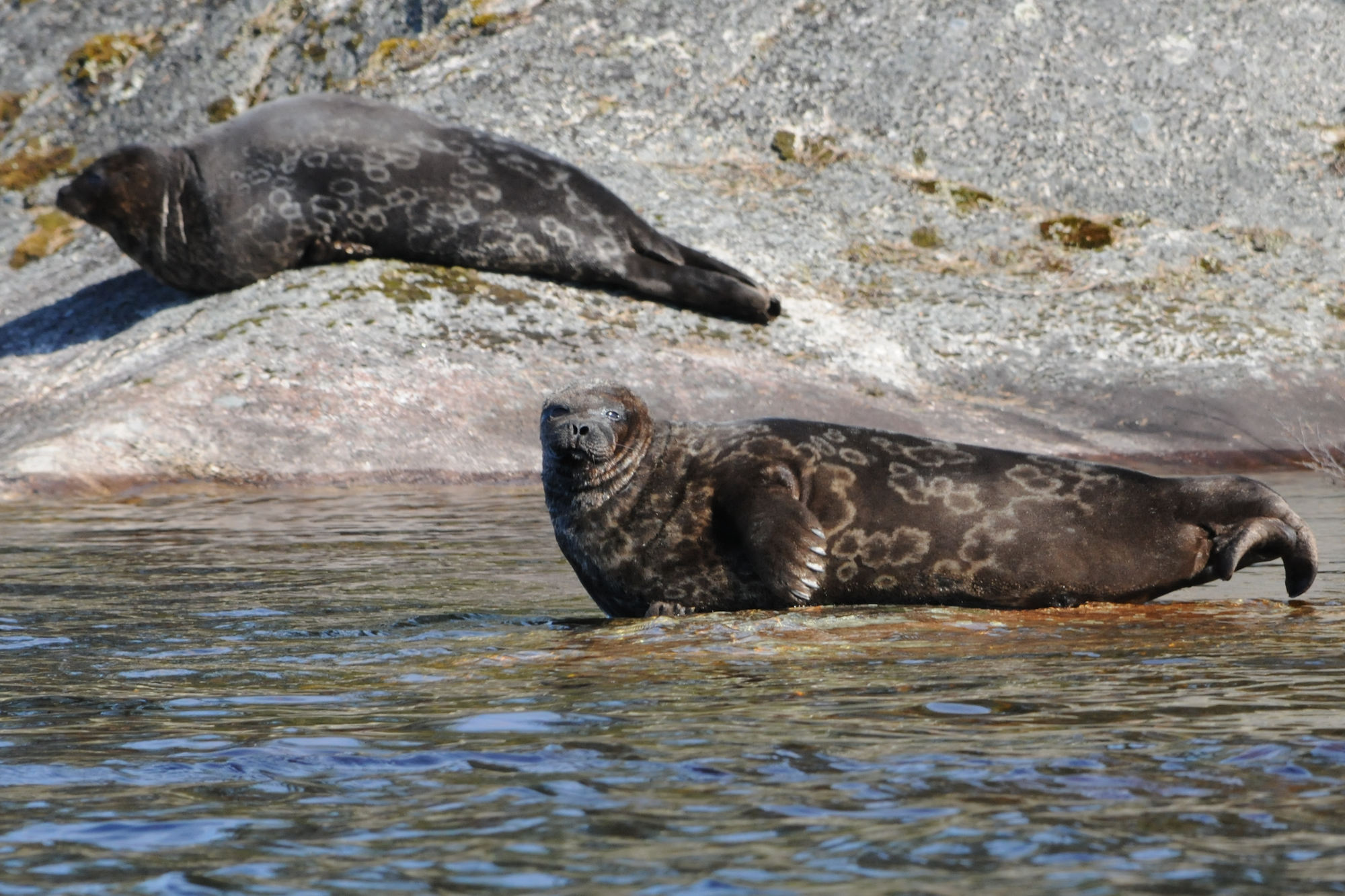Just as you can be identified by your unique set of fingerprints, so Saimaa ringed seals can be individually recognised by a set of unique features…the ring patterns of their fur! Our grant receiver Vincent Biard writes why you might spot a researcher on the shoreline of Lake Saimaa.
After a long winter, Saimaa ringed seals need to change their fur. From late April to early June, they are moulting on the rocky shoreline of Lake Saimaa. If you happen to sail there during the spring, you might be one of those few lucky people who get a chance to observe ringed seals…or researchers.
In fact, spring is the season when our team, composed of researchers from the University of Eastern Finland and volunteers including seal experts from Metsähallitus and WWF, is patrolling the lake with cameras. Our goal is to photograph as many seals as possible to supplement our Photo-ID project. Our actions are conducted under a specific permit delivered by ELY Centres enabling us to approach the seals and to collect photographing material for research purposes.


UEF researchers are photographing Saimaa ringed seal from the boat (left) but are also using game
cameras to monitor some specific areas (right). Pictures: Meeri Koivuniemi, 2018; Tuomas
Huuhtanen, 2019.
The white rings of the Saimaa “ringed” seals
Photo-ID or Photo-Identification is a more and more common tool used in science to monitor animal populations. It is based on the identification of permanent visual attributes specific to one individual like scars, skin depigmentation or fur patterns. This method is used to monitor many wildlife species all around the world such as humpback whales in Australia, plain zebras in Kenya, or lynx in Spain. We have implemented this approach in Lake Saimaa for nearly a decade and it enables us to better understand the Saimaa ringed seal.
Saimaa ringed seals have white rings on their fur. That is why they are called “ringed” seals. However, if you look carefully, you can notice that the rings are creating specific shapes or patterns. Such lifelong fur patterns are unique and therefore different for each individual. Our recognition system is entirely based on these ring patterns differences.


Jelena and Tilta are two females from Pihlajavesi region, south from Savonlinna. Jelena was first photographed in 2013, and Tilta, in 2015. By comparing these pictures, you can see the fur pattern differences. Pictures: Vincent Biard, 2019.
Pictures help to study seals’ social connections
Nowadays, we are collecting thousands of seal images in a few weeks’ time. These pictures are sorted, organised, and selected. Only the best images, in which you can clearly see the fur rings, are kept for the matching. Matching is a really laborious process and it takes usually several months to get it completed. It consists of comparing manually each new picture to the database created over the years. The database, including living and dead individuals, is growing every year and has already exceeded 400 Saimaa ringed seals.
Although recognising seals is a long and fastidious job, it is an essential step for my PhD studies. I am interested in the habitat usage and the social connection existing between seals. Along with our observations, we have noticed that many seals are reusing the same island every year to moult. We also observed that some individuals tend to stay with each other. Some of them moult together every year! We are wondering if individuals’ sex, age or family links could be the factors explaining these associations. Overall, this knowledge helps us to better understand the behaviour of these endangered seals and it is indispensable for producing more accurate conservation plans.
We are always eager to gather more information about the seals and you can actively contribute to our project here. You can submit your sightings and pictures of Saimaa ringed seals and thus contribute to its conservation!

Vincent Biard is a PhD student at the Environmental and Biological Sciences department form the University of Eastern Finland. His research, titled “Behaviour genetics on the endangered Saimaa ringed seal population”, is funded by the Nessling Foundation.
Twitter: @vincent_biard

